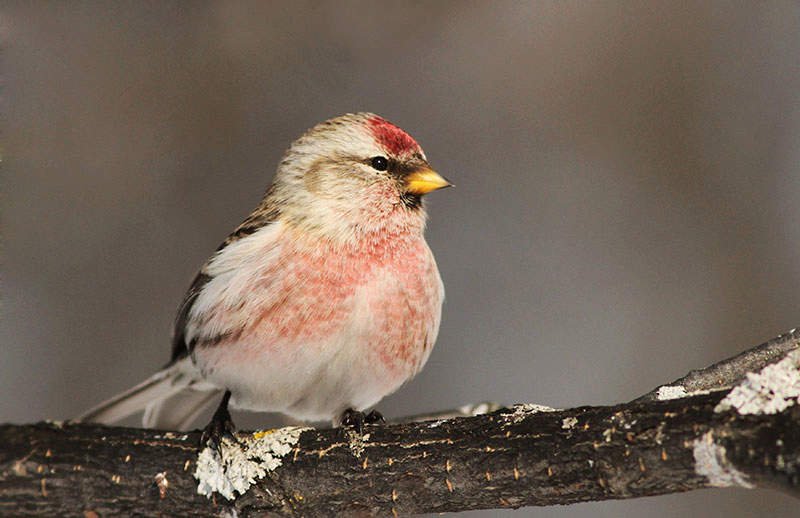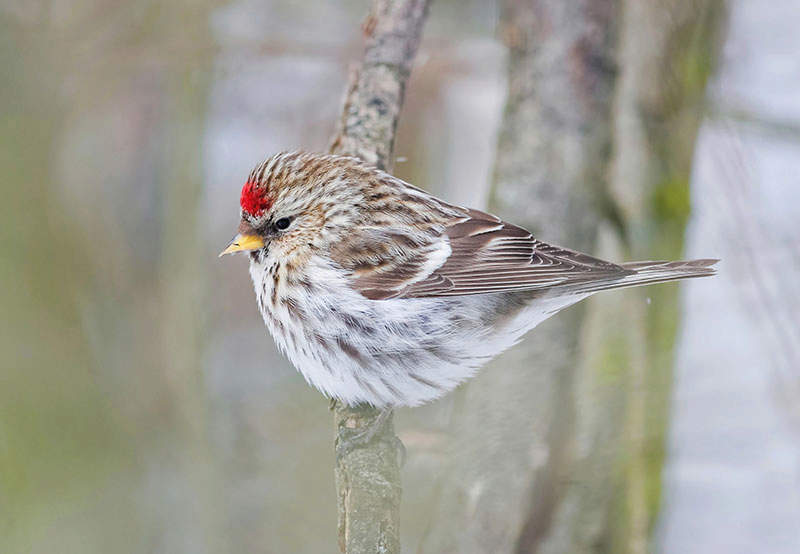Featured Birds: Redpolls
Most Americans in Canada and the northern half of the US see fewer birds in winter than any other time of year. At times, some of our feeding stations can be nearly empty of birds, frustrating and sad for those of us who keep our feeders clean and filled. But then one morning, out of the blue, in comes a flock of dozens of tiny finches with glittering ruby foreheads; many also have rosy breasts. And suddenly we know it all was worth it.
Redpolls are mostly grayish, covered with sparrow-like streaks, except for that forehead and the males’ pink or red breast color. They are just about exactly the size of Pine Siskins and American Goldfinches, and the three species can be found together in the same flocks. If you notice any pink or red at all, your tiny finch is a redpoll. If it has any yellow at all (except on the bill), it’s not a redpoll.

Redpolls feed on weed seeds and any birch seeds still clinging to bare branches. At our feeders, they take sunflower and nyjer seed. To get water, they eat snow, sip from dripping icicles, or drink from tiny puddles on sunny days. During many winters, the majority of redpolls stay in northern Canada and Alaska.
How do they survive? First, they grow thicker "thermal underwear"—that is, the down feathers beneath those outer feathers that we can see are far denser in these little finches than in most species. Winter nights are both colder and longer than winter days; during that extreme period, redpolls can retreat into snow burrows, which can be almost 40 degrees (Fahrenheit) warmer than the air temperature. Carbon dioxide builds up rapidly in tiny burrows, so the redpolls must leave fairly frequently to breathe fresh air and get the air within the burrow circulating.
Their eyes have more “rod cells” in the retina than most birds, giving them better night vision to accomplish this. That vision in low light also allows them to feed earlier in the morning and later in the afternoon than most birds. And they have special pouches along their esophagus that store food. Before they go to sleep at night, they can fill their stomach and these pouches, so during the night they can continue to digest food, “stoking their metabolic furnace” to stay alive.

How can we help them survive? Making sure our bird feeders are stocked in late afternoon and before first light is the best thing we can do for them. As snows begin to melt, it’s also important to rake up the seed shells from the ground so harmful bacteria doesn’t grow—many little finches succumb to salmonella poisoning in late winter and early spring because they so often feed on the ground where seeds and bird droppings may collect.





